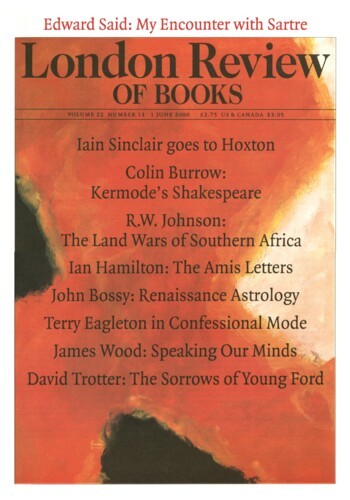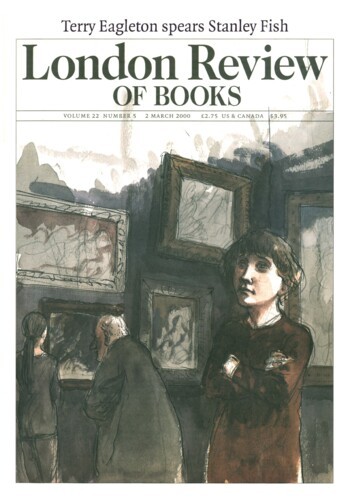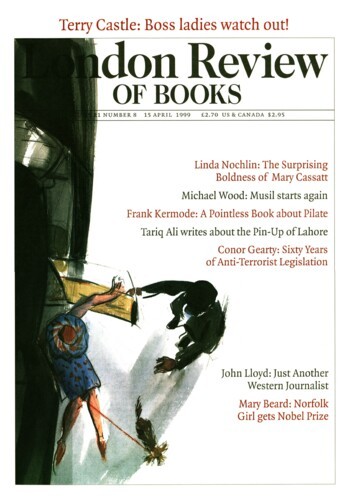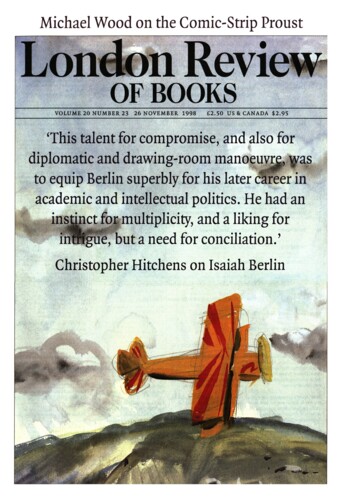Very Tight Schedule
Theo Tait, 1 June 2000
Jason Brown’s sometimes excellent first book is a collection of stories mostly set in and around Portland, Maine. His subject is what Sherwood Anderson, a pioneer of the genre, called the ‘buried lives’ of individuals. His narrators – loners, neglected children, thieves, substance abusers – are isolated, unsuccessful people, longing, more or less consciously, for some kind of wider community. Despite the small scale and determinedly regional focus of his fiction, Brown’s vision – like Anderson’s – is grand, even grandiose. It’s a way of imagining a huge, fluid industrial society.’‘




